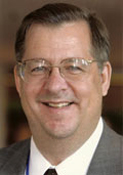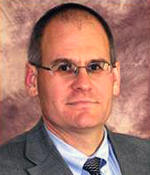What’s Happening At The McGowan Institute?
July 2012 | VOL. 11, NO. 7 | www.mcgowan.pitt.edu
McGowan Institute for Regenerative Medicine Faculty Member Selected to Participate in NAE’s 2012 U.S. Frontiers of Engineering Symposium
 McGowan Institute for Regenerative Medicine faculty member Steven R. Little, PhD, is among 78 of the nation’s brightest young engineers selected to take part in the National Academy of Engineering’s (NAE) 18th Annual U.S. Frontiers of Engineering Symposium. Dr. Little is chair of the Department of Chemical and Petroleum Engineering, associate professor, and Bicentennial Alumni Faculty Fellow of the University of Pittsburgh Swanson School of Engineering.
McGowan Institute for Regenerative Medicine faculty member Steven R. Little, PhD, is among 78 of the nation’s brightest young engineers selected to take part in the National Academy of Engineering’s (NAE) 18th Annual U.S. Frontiers of Engineering Symposium. Dr. Little is chair of the Department of Chemical and Petroleum Engineering, associate professor, and Bicentennial Alumni Faculty Fellow of the University of Pittsburgh Swanson School of Engineering.
The symposium will be held on Sept. 13-15, 2012, at the General Motors Technical Center in Warren, Michigan, and will examine serious games, vehicle electrification, climate engineering, and engineering materials for the biological interface. Alan I. Taub, retired vice president of General Motors global research and development, will be a featured speaker at the symposium.
Engineers ages 30 to 45 who are performing exceptional engineering research and technical work in a variety of disciplines will come together for the 2-1/2 day event. The participants — from industry, academia, and government — were nominated by fellow engineers or organizations and chosen from approximately 300 applicants.
“Our nation’s health, quality of life, and security will depend on the engineering achievements of the 21st century,” said NAE President Charles M. Vest. “The Frontiers of Engineering program gives young engineering pioneers the opportunity to collaborate and share approaches across fields. We believe those interactions will generate new ideas for improving the future.”
Sponsors for the 2012 U.S. Frontiers of Engineering are General Motors, the Grainger Foundation, Defense Advanced Research Projects Agency, National Science Foundation, Microsoft Research, and Cummins Inc.
The mission of NAE is to advance the well-being of the nation by promoting a vibrant engineering profession and by marshalling the expertise and insights of eminent engineers to provide independent advice to the federal government on matters involving engineering and technology. The NAE is part of the National Academies (along with the National Academy of Sciences, the Institute of Medicine, and the National Research Council), an independent, nonprofit organization chartered by Congress to provide objective analysis and advice to the nation on matters of science and technology.
SCIENTIFIC ADVANCES
Endoscopic Therapy is an Effective Treatment for Chronic Pancreatitis
 McGowan Institute for Regenerative Medicine affiliated faculty member David Whitcomb, MD, PhD, professor of medicine, cell biology and physiology, and human genetics at the University of Pittsburgh, chief of the Division of Gastroenterology, Hepatology, and Nutrition, as well as the founder and director of the Center for Genomic Sciences, and researchers at the University of Pittsburgh School of Medicine report that endoscopic therapy was found to be effective for patients with chronic pancreatitis. The team’s findings appear in the Journal of Clinical Gastroenterology and Hepatology.
McGowan Institute for Regenerative Medicine affiliated faculty member David Whitcomb, MD, PhD, professor of medicine, cell biology and physiology, and human genetics at the University of Pittsburgh, chief of the Division of Gastroenterology, Hepatology, and Nutrition, as well as the founder and director of the Center for Genomic Sciences, and researchers at the University of Pittsburgh School of Medicine report that endoscopic therapy was found to be effective for patients with chronic pancreatitis. The team’s findings appear in the Journal of Clinical Gastroenterology and Hepatology.
Chronic pancreatitis is a progressive inflammatory disease characterized by abdominal pain and permanent damage to the pancreas. Pain associated with the condition is often a result of pancreatic duct obstruction from stones or strictures. Endoscopic therapy is a minimally invasive procedure to treat these obstructions, alleviating the pressure in the pancreatic duct, and ensuring adequate drainage of pancreatic secretions.
The researchers analyzed data on 146 patients enrolled in the North American Pancreatitis Study-2 to assess the utilization, effectiveness, and long-term clinical outcomes of endoscopic therapy and surgery in patients with chronic pancreatitis compared with those who were managed medically.
Abdominal pain, the most debilitating symptom for those with the disease, was present in two-thirds of patients, with over half of those describing the pain as constant and requiring daily narcotics. Among study participants, 58 percent underwent endoscopic therapy, 33 percent were managed medically, and 9 percent had surgery prior to the study. Of those who had endoscopic therapy, 33 percent later had surgery.
“Among those who were treated with endoscopic therapy, more than half had complete or partial long-term clinical success. Compared with those managed medically, patien b bts undergoing endoscopic therapy were more symptomatic before treatment and had more complex disease. Of those patients who failed to improve after endoscopic therapy, half experienced good clinical outcomes following subsequent surgery,” said Dhiraj Yadav, M.D., M.P.H., lead author and associate professor of medicine in the Division of Gastroenterology, Hepatology and Nutrition at the University of Pittsburgh School of Medicine.
In addition, researchers found that the patients who responded to endoscopic therapy had the treatment sooner after diagnosis than those who didn’t respond to the therapy. This finding suggests that a degree of irreversibility develops as the disease progresses and may indicate a role for endoscopic or surgical intervention early in the disease course. “Based on these findings, we propose a stepwise approach for managing chronic pancreatitis, starting with medical management. When indicated, patients should be considered for endoscopic therapy early in the disease course,” said Dr. Yadav. “A multidisciplinary, proactive approach is critical to controlling symptoms and disease progression in an effective, safe, and lasting manner.”
Center for Military Medicine Research Established at University of Pittsburgh
 Promoting research to advance medicine for the military is the focus of a newly established center at the University of Pittsburgh Schools of the Health Sciences, and McGowan Institute for Regenerative Medicine associate director Rocky Tuan, PhD, the Arthur J. Rooney Sr. Chair in Sports Medicine and the executive vice chair for research and director of the Center for Cellular and Molecular Engineering, Department of Orthopaedic Surgery, is its founding director with support from McGowan Institute for Regenerative Medicine affiliated faculty member Peter Strick, PhD, distinguished professor, Department of Neurobiology.
Promoting research to advance medicine for the military is the focus of a newly established center at the University of Pittsburgh Schools of the Health Sciences, and McGowan Institute for Regenerative Medicine associate director Rocky Tuan, PhD, the Arthur J. Rooney Sr. Chair in Sports Medicine and the executive vice chair for research and director of the Center for Cellular and Molecular Engineering, Department of Orthopaedic Surgery, is its founding director with support from McGowan Institute for Regenerative Medicine affiliated faculty member Peter Strick, PhD, distinguished professor, Department of Neurobiology.
“I am delighted to have this opportunity to marshal our considerable research talents across multiple disciplines to improve the health and function of our injured soldiers,” Dr. Tuan said.
The Center for Military Medicine Research, Health Sciences, will explore applications of regenerative medicine, reconstructive medicine, transplantation immunology, and neuroscience, including traumatic brain injury and neuroprosthetics, with the aim of getting innovative therapies to wounded warriors, said Arthur S. Levine, MD, senior vice chancellor for the health sciences and dean, School of Medicine.
“The center represents a formal mechanism through which the challenges and opportunities of casualty care and wound healing can be examined at an advanced research level,” he said. “It will identify a network of successful partnerships and collaborations between scientists, clinicians, industry, and the U.S. departments of Defense and Veterans Affairs to foster the most promising research technologies and therapeutic strategies.”
Dr. Strick will work closely with Dr. Tuan to establish the center. He also holds the Endowed Chair in Systems Neuroscience, and is senior research career scientist at the Pittsburgh VA Healthcare System, co-director of the Center for the Neural Basis of Cognition, and director of the Systems Neuroscience Institute. Dr. Strick, whose research efforts focus on understanding the neural circuits that govern voluntary movement, was recently elected to the National Academy of Sciences.
Retired Col. Ronald Poropatich, MD, MS, will serve as the center’s executive director and Ann Gleeson, formerly of the Pittsburgh Tissue Engineering Initiative, will be its managing director.
$8.3 Million NIH Grant to Study Sarcoidosis, Alpha-1 Antitrypsin Deficiency Awarded
 A multidisciplinary team at the University of Pittsburgh, which includes McGowan Institute for Regenerative Medicine affiliated faculty member Stephen R. Wisniewski, PhD, professor, Department of Epidemiology, and associate dean for research, Graduate School of Public Health, University of Pittsburgh, will be leading a national effort to explore the relationships between the bacteria that live in the lungs, gene activation patterns, and disease progression. The project aims to learn more about the causes and progression of two potentially deadly yet under-studied lung diseases, alpha-1 antitrypsin (A1AT) deficiency and sarcoidosis, as well as possibly to identify new treatments for them.
A multidisciplinary team at the University of Pittsburgh, which includes McGowan Institute for Regenerative Medicine affiliated faculty member Stephen R. Wisniewski, PhD, professor, Department of Epidemiology, and associate dean for research, Graduate School of Public Health, University of Pittsburgh, will be leading a national effort to explore the relationships between the bacteria that live in the lungs, gene activation patterns, and disease progression. The project aims to learn more about the causes and progression of two potentially deadly yet under-studied lung diseases, alpha-1 antitrypsin (A1AT) deficiency and sarcoidosis, as well as possibly to identify new treatments for them.
Funded by a 3-year, $8.3 million grant from the National Institutes of Health, the Genomic Research in A1AT and Sarcoidosis study (GRADS) Genomics and Informatics Center will obtain patient samples from seven clinical centers across the nation and use a combination of sophisticated genome and microbiome profiling techniques with advanced computational methods to identify biomarkers that indicate the current status of the lung diseases and predict their progression and response to the therapy, explained lead-principal investigator Naftali Kaminski, M.D., professor, Division of Pulmonary, Allergy and Critical Care Medicine, Pitt School of Medicine, and director, Dorothy P. and Richard P. Simmons Center for Interstitial Lung Disease.
“Integrating genome, microbiome, and clinical information has never been done in sarcoidosis or A1AT,” he said. “The insights from this study may dramatically change the understanding and management of both diseases.”
Co-principal investigator Michael Becich, MD, PhD, professor and chair, Department of Biomedical Informatics, Pitt School of Medicine, noted that the study team included experts in genomics, pulmonary medicine, epidemiology, medical bioinformatics, computer science, quantitative imaging, computational biology, sequencing, and microbiome and virome research.
“This coordinated, multidisciplinary effort will ensure that data are not only obtained, but also analyzed and shared with the scientific community,” he said.
“This study is an important step toward implementing personalized medicine approaches in chronic lung disease,” added co-principal investigator Dr. Wisniewski.
The GRADS program is sponsored by the NIH’s National Heart, Lung, and Blood Institute (NHLBI).
“This award highlights the commitment of the NHLBI to use cutting-edge molecular and genomics applications for the discovery of disease biomarkers to identify new diagnostic tools and targets for new therapies,” said James Kiley, Ph.D., director of the NHLBI Division of Lung Diseases. “It also underscores the NHLBI’s commitment to advance understanding of all lung diseases.”
In one of two projects, the researchers will use samples collected by GRADS centers to examine the hypothesis that changes in the microbial environment, or microbiome, of the lung influence the severity of A1AT deficiency, an inherited disorder in which the body does not make sufficient amounts of the A1AT protein leading to early lung and liver disease. The researchers also hope to find biomarkers of disease status in the sputum.
The second project will explore whether shifts in immune regulation and in the microbiome population can indicate and predict the severity of sarcoidosis, a disorder of uncontrolled inflammation that can affect any organ, but typically starts in the lungs, skin, and lymph nodes and is characterized by a highly variable and unpredictable course.
Kevin Gibson, MD, professor, University of Pittsburgh Division of Pulmonary, Allergy and Critical Care Medicine, and clinical director of the Simmons Center, is the principal investigator of the local GRADS clinical center.
Other collaborating and clinical GRADS centers include Vanderbilt University; University of South Carolina; University of California, San Francisco; University of Illinois at Chicago; Yale University; the J. Craig Venter Institute; University of Pennsylvania; National Jewish Health; and Johns Hopkins University.
The GRADS genomics and informatics center is funded by NIH grant #1U01HL112707-01. Additional GRADS funding is provided by NIH grant # 1U01HL112711-01.
Smart Materials Get SMARTer
 Few synthetic materials are able to mimic the human body’s ability to regulate itself—until now. In Nature, a team of engineers from the University of Pittsburgh and Harvard University, including McGowan Institute for Regenerative Medicine affiliated faculty member Anna Balazs, PhD, distinguished professor of chemical engineering and Robert Von der Luft professor, Department of Chemical and Petroleum Engineering, Pitt’s Swanson School of Engineering, has presented a strategy for building self-regulating microscopic materials, ultimately paving the way toward so-called smart buildings with more energy-saving features and smarter biomedical engineering applications.
Few synthetic materials are able to mimic the human body’s ability to regulate itself—until now. In Nature, a team of engineers from the University of Pittsburgh and Harvard University, including McGowan Institute for Regenerative Medicine affiliated faculty member Anna Balazs, PhD, distinguished professor of chemical engineering and Robert Von der Luft professor, Department of Chemical and Petroleum Engineering, Pitt’s Swanson School of Engineering, has presented a strategy for building self-regulating microscopic materials, ultimately paving the way toward so-called smart buildings with more energy-saving features and smarter biomedical engineering applications.
“Consider, for example, what happens when a typical hair dryer becomes too hot: The device just shuts off. The hair dryer does not, however, turn itself back on when the system has cooled down. Hence, this is a very passive way of regulating temperature,” said Dr. Balazs. “Our design is a much more active way of continuously sensing and regulating the temperature. It’s another step toward making smart materials that are just as conscious of their internal workings as the human body is of its inner mechanisms.”
The Pitt team, which also included Olga Kuksenok, PhD, a research professor in Pitt’s Swanson School of Engineering, crafted a new multi-scale model for the novel material, created by embedding “posts,” or tiny hairs, into a hydrogel.
“This model captured salient features of our experimental work, including the presence of two fluids lying above the embedded posts and the posts’ tips (decorated with catalysts), which interact with chemical reagents in the upper fluid and thereby produce heat,” said Dr. Kuksenok. “Thus, the scale model captured the components and range of complex phenomena occurring within our experimental system.”
This model helped the Harvard team optimize the behavior of the system that the Pitt team created, which they later called SMARTS—a Self-regulated Mechano-chemical Adaptively Reconfigurable Tunable System. SMARTS offers a customizable way to trigger chemical reactions on cue and reproduce the type of stable feedback loops found in biological systems. By building SMARTS from the bottom up, the Harvard team was able to integrate the desired features into the material itself. Whether it is a pH level, temperature, or pressure, SMARTS can directly interact with the desired stimulus, presenting a platform that is customizable, reversible, and efficient.
To demonstrate SMARTS, the team selected temperature as the stimulus. With the posts in the upright position, the tips were able to interact with reagents in the upper fluid layer and thereby generate heat, which then caused the temperature-sensitive gel to shrink. When the gel shrank, the posts bent away from the reagents, and the temperature of the system eventually cooled down. This caused the gel to expand and, consequently, caused the posts to assume an upright configuration.
The researchers anticipate that this technique could be integrated into handheld portable diagnostics, which are playing a growing role in bringing medicine to developing or rural areas.
“Many biomedical analyses require specific temperatures, pH, or other conditions and are hard to do outside a lab, but if a portable device contains homeostatic materials that can autonomously regulate these conditions, it could bring many more sophisticated analyses to many more people,” said Dr. Balazs.
According to the Pitt researchers, SMARTs is also an ideal “laboratory” to study the fundamental properties of biological and chemical systems, such as how living systems are able to so efficiently convert between chemical and mechanical processes; furthermore, they believe the mechanical motion of the hair-like posts could be put to work or used for propulsion, like cilia in a living organism.
AWARDS AND RECOGNITIONS
Distinguished Professors Named
Two McGowan Institute for Regenerative Medicine affiliated faculty members have been named Distinguished Professors. They are:
- George Michalopoulos, MD, PhD, Distinguished Professor of Pathology

- Sanjeev G. Shroff, PhD, Distinguished Professor of Bioengineering
The rank of Distinguished Professor acknowledges extraordinary, internationally recognized scholarly attainment in an individual discipline or field. University of Pittsburgh Chancellor Mark A. Nordenberg made the appointments based on the recommendations of Provost and Senior Vice Chancellor Patricia E. Beeson. The appointment of Dr. Michalopoulos was effective July 1. Dr. Shroff’s appointment will be effective September 1.
Dr. Michalopoulos is professor and chair in the School of Medicine’s Department of Pathology. He has been recognized for his contributions to understanding the pathways of growth factors leading the liver to regenerate. In 1989, his laboratory, in conjunction with two other laboratories, independently discovered Hepatocyte Growth Factor (HGF), a protein that is a major driver of the regeneration of liver and other tissues. His laboratory subsequently identified the receptor for that protein.
Dr. Michalopoulos joined the School of Medicine faculty in 1991, also serving as associate vice chancellor for the Schools of the Health Sciences and as interim dean for the School of Medicine 1995-98.
He is co-founder of Kytaron, a local biotech company working on building small tissues in culture and capitalizing on several new lines of biotechnology, including some that were invested in and patented by him and his collaborators.
He continues his research in liver regeneration and the connection between growth regulation of normal liver and the genomically altered pathways seen in liver cancer. For his work, Dr. Michalopoulos received the Rous-Whipple award from the Society for Investigative Pathology and the Distinguished Research Award from the American Liver Foundation.
Dr. Michalopoulos received an MD from Athens University School of Medicine. He completed a residency in anatomic pathology and a PhD in oncology at the Wisconsin Medical Center in Madison.
Dr. Shroff is professor and Gerald E. McGinnis Endowed Chair in Bioengineering in the Swanson School of Engineering; professor of medicine in the School of Medicine; and professor of clinical and translational science in the Clinical and Translational Science Institute.
Additionally, Dr. Shroff is a core faculty member in the Pitt-UPMC McGowan Institute of Regenerative Medicine and an affiliated faculty member at the Magee-Womens Research Institute. Dr. Shroff also is associate chair of the Department of Bioengineering.
Dr. Shroff received his PhD in bioengineering from the University of Pennsylvania and completed a postdoctoral fellowship at Penn.
His research interests involve studies of the cardiovascular system — including the evaluation of contractile and regulatory proteins and overall whole heart function; vascular stiffness and cardiovascular function; and large-scale mathematical simulations of biological systems for research, education, and engineering design.
He is an elected fellow of the American Physiological Society, the American Institute for Medical and Biological Engineering, and the Biomedical Engineering Society.
Dr. Shroff received the 2007 Carnegie Science Center Award for Excellence (University/Post-Secondary Educator). He also received the Chancellor’s Distinguished Teaching Award in 2011.
Advancing the Next Generation of Plastic Surgeons
 Plastic Surgery at the University of Pittsburgh School of Medicine has been granted department status, completing its evolution from a division under the Department of Surgery. The new department will be led by J. Peter Rubin, MD, UPMC Professor of Plastic Surgery and McGowan Institute for Regenerative Medicine faculty member.
Plastic Surgery at the University of Pittsburgh School of Medicine has been granted department status, completing its evolution from a division under the Department of Surgery. The new department will be led by J. Peter Rubin, MD, UPMC Professor of Plastic Surgery and McGowan Institute for Regenerative Medicine faculty member.
“The medical school’s executive committee readily supported the transition, noting the atmosphere of collaborative research and educational rigor needed to succeed as an independent department,” said Arthur S. Levine, M.D., Pitt’s senior vice chancellor for the health sciences and dean, School of Medicine. “It will immediately become one of the largest plastic surgery departments in the nation, with around two dozen faculty members and more to come,” he said. “And it already boasts one of the nation’s largest and most competitive plastic surgery residency programs, including highly regarded fellowship training opportunities in subspecialties such as hand surgery and craniofacial surgery.”
“Being named a department represents the growth of plastic surgery as an independent discipline, both in scope of practice and educational process, as well as in the prominent role that the University of Pittsburgh has played in advancing the frontiers of this specialty,” said Dr. Rubin, founding chair of the department. “As we move forward with plastic surgery’s mission to restore form and function throughout the body, our department will maintain its commitment to excellent clinical care, service, and education as well as to cutting-edge research.”
The first full-time plastic surgeon arrived to start the division in 1940 and recruited its first resident in 1948. Under the leadership of five chiefs, there have been approximately 310 plastic surgery residents trained at Pitt. At last count, 22 alumni of the residency program have served as division chiefs for nearly a quarter of the nation’s 90 plastic surgery programs.
“For departments of academic medicine and surgery, the educational mission of training future physicians and surgeons remains one of the primary responsibilities,” said Joseph Losee, MD, executive vice chair of the department and program director. “Our program offers fellowship training in hand surgery, pediatric plastic/craniofacial surgery, body contouring surgery, and reconstructive microsurgery. Looking forward, we are excited by the challenge of training plastic surgeons who will become the next generation of program directors, chairs, and presidents of national societies.”
At the forefront of National Institutes of Health-funded research in the department is innovative work in adipose stem cells, wound healing, composite tissue Allotransplantation, and craniofacial biology.
The Department of Plastic Surgery includes 26 full-time faculty members and 27 volunteer, adjunct, and affiliated faculty. Under the direction of Dr. Losee and Vu Nguyen, M.D., the residency program is one of the largest combined independent and integrated programs in the country.
 Regenerative Medicine Podcast Update
Regenerative Medicine Podcast Update
The Regenerative Medicine Podcasts remain a popular web destination. Informative and entertaining, these are the most recent interviews:
#111 –– Dr. Rando is the deputy director of the Stanford Center on Longevity at Stanford University and a professor with the Department of Neurology and Neurological Sciences, Stanford University School of Medicine. Dr. Rando discusses his research in muscle stem cell biology.
Visit www.regenerativemedicinetoday.com to keep abreast of the new interviews.
Publication of the Month
| Authors: | Bible E, Qutachi O, Chau DY, Alexander MR, Shakesheff KM, Modo M. |
| Title: | Neo-vascularization of the stroke cavity by implantation of human neural stem cells on VEGF-releasing PLGA microparticles |
| Summary: | Replacing the tissue lost after a stroke potentially provides a new neural substrate to promote recovery. However, significant neurobiological and biotechnological challenges need to be overcome to make this possibility into a reality. Human neural stem cells (hNSCs) can differentiate into mature brain cells, but require a structural support that retains them within the cavity and affords the formation of a de novo tissue. Nevertheless, in our previous work, even after a week, this primitive tissue is void of a vasculature that could sustain its long-term viability. Therefore, tissue engineering strategies are required to develop a vasculature. Vascular endothelial growth factor (VEGF) is known to promote the proliferation and migration of endothelial cells during angio- and arteriogenesis. VEGF by itself here did not affect viability or differentiation of hNSCs, whereas growing cells on poly(d,l-lactic acid-co-glycolic acid) (PLGA) microparticles, with or without VEGF, doubled astrocytic and neuronal differentiation. Secretion of a burst and a sustained delivery of VEGF from the microparticles in vivo attracted endothelial cells from the host into this primitive tissue and in parts established a neovasculature, whereas in other parts endothelial cells were merely interspersed with hNSCs. There was also evidence of a hypervascularization indicating that further work will be required to establish an adequate level of vascularization. It is therefore possible to develop a putative neovasculature within de novo tissue that is forming inside a tissue cavity caused by a stroke. |
| Source: | Biomaterials. 2012 Jul 17. [Epub ahead of print] |
Grant of the Month
| PI | Stephen F Badylak and Alejandro Jose Almarza |
| Title | A Regenerative Medicine Approach for TMJ Meniscus Restoration |
| Description | The long-term objective of this work is the development of a safe and effective regenerative medicine therapy for replacement of the temporomandibular joint (TMJ) meniscus (disc) with associated protection of the TMJ articulating surfaces. The proposed studies are conceptually based upon the use of an extracellular matrix (ECM) scaffold as an inductive template for in-vivo TMJ disc reconstruction. We will use a porcine model of bilateral TMJ disc removal and investigate the effects of cell seeding, in-vitro mechanical loading, and chemical cross-linking of the scaffold upon the in-vivo remodeling process. We will also evaluate the role of recruited multipotential cells and the influence of the host innate immune response upon the temporo-spatial pattern of scaffold remodeling. The central hypothesis of this study is that constructive remodeling of an ECM scaffold into a functional TMJ disc occurs in association with a predominantly M2 macrophage phenotype response, involves the in-situ recruitment of endogenous stem and progenitor cells, and that the remodeling process is governed in part through site-appropriate mechanical stimulation. Strong preliminary studies support this hypothesis. |
| Source | National Institutes of Health, National Institute of Dental and Craniofacial Research (NIH R01) |
| Term | 07/01/2012-06/30/2018 |
| Amount: | $2,5269,978 |
Newsletter Comments or Questions: McGowan@pitt.edu
